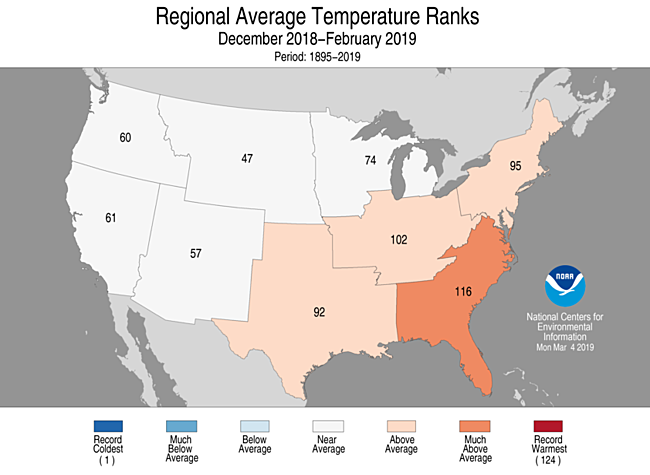![]()

When it comes to prophecy — or at least attempting such — Christians certainly don’t have a monopoly.
For example, there’s the Old Farmer’s Almanac.
Every year this venerable periodical predicts the weather for the entire upcoming year, as does its competitor, the Farmer’s Almanac. No one seems to agree on which is “older.” The preponderance of evidence seems to give it to the aptly named Old Farmer’s Almanac (1792 versus 1818), which, getting back to weather, claims (underscore “claims”) an eighty-percent accuracy rate.
 That’s better than Punxsutawney Phil (the groundhog), who’s just forty percent over the past decade.
That’s better than Punxsutawney Phil (the groundhog), who’s just forty percent over the past decade.
At any rate: the last Old Farmer’s Almanac basically predicted a winter for most of the United States that would be milder than normal. Despite an Arctic vortex (or two), that does seem to have played out: the Upper Midwest and Northeast — which the Old Almanac said would be a degree above normal — was slightly milder than usual, though it didn’t always feel like that!
As for the “Atlantic Corridor”: this it said would have “winter temperatures much above normal, with the coldest periods in early December to mid-December, early and late January, and early February.”

Fairly accurate [compare here]. But isn’t that kind of normal: the coldest periods in January and early February? Does it really take a soothsayer? And where was the “weak El Niño it forecast?
As for the Southeast: “much warmer and slight drier” than normal. That’s not how it has felt here in Florida! But probably true. And California? Much of it, cooler.
The Farmer’s Almanac in certain aspects predicted the opposite (“flake news”?), but also scored hits.

The Old one uses a formula devised by founder Robert B. Thomas, who believed our planet’s weather was chiefly pinned to magnetic storms on the surface of the sun. “He developed a secret weather prediction formula based on that belief. Notes about that formula are locked in a black box in the almanac’s offices,” explains Mother Nature Network. “The formula has been refined over the years to include more scientific calculations. The almanac now uses three disciplines to make long-range predictions:
- solar science, the study of sunspots and other solar activity
- climatology, the study of prevailing weather patterns
- meteorology, the study of the atmosphere”
And its competitor?
“The formula takes into consideration things like sunspot activity, tidal action of the moon, the position of the planets and a variety of other factors. The editors deny using any type of computer satellite-tracking equipment, weather lore or groundhogs.”
Okay!
No visions and apparitions or locutions. Just straightforward guesswork based on wholly natural fluctuations. The National Weather Service is a bit more precise with all its computations.
When it comes to mystical predictions, one commentator writing about a prophet named Venerable Bartholomew Holzhauser said, “True prophecies have a good object in view. They aim not at the satisfaction of curiosity, but are designed to instruct, solace, and warn.” So it is, with weather, that one might stick with the National Weather Service (whatever your politics or curiosity).


